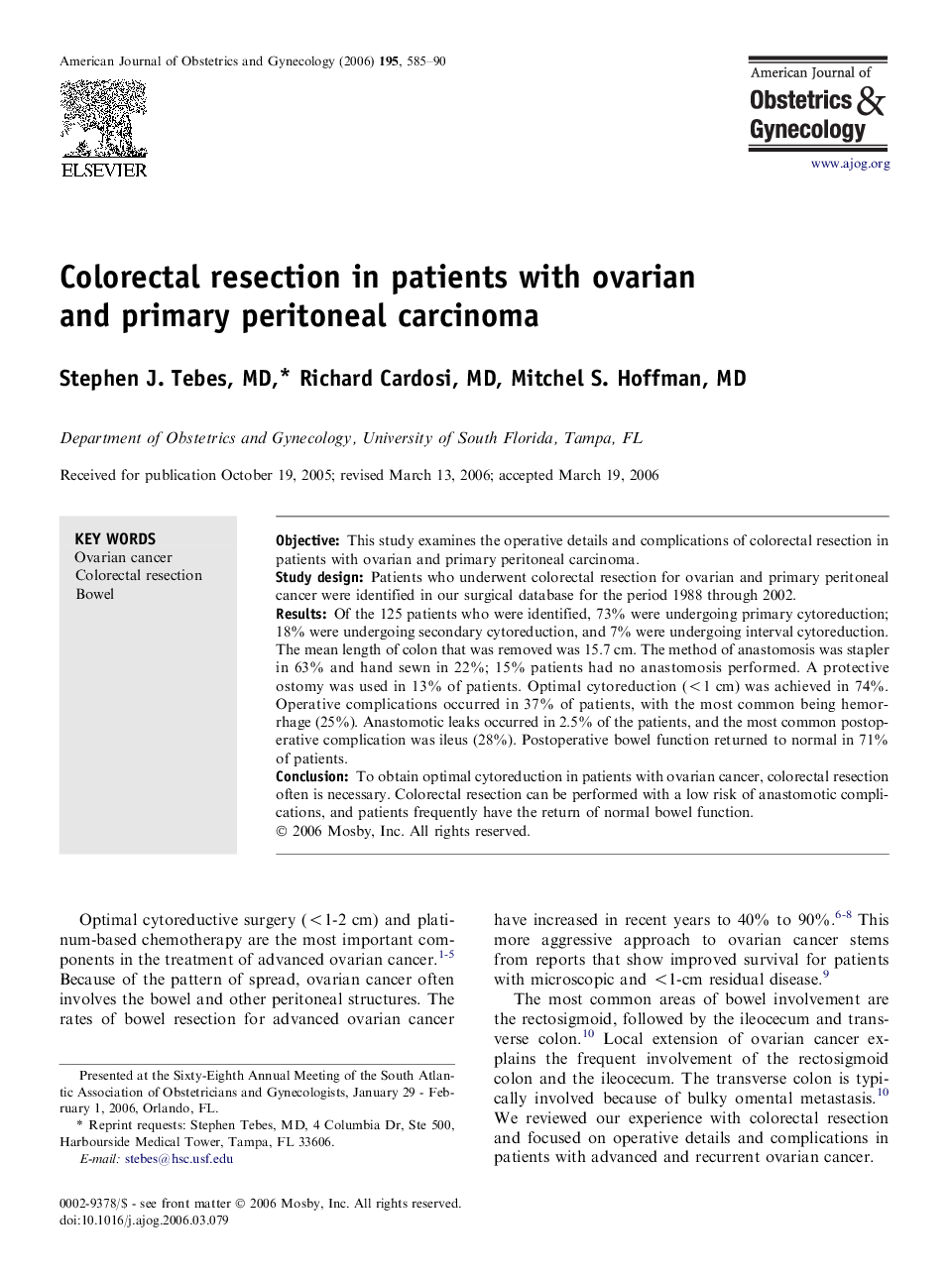| Article ID | Journal | Published Year | Pages | File Type |
|---|---|---|---|---|
| 3440648 | American Journal of Obstetrics and Gynecology | 2006 | 5 Pages |
ObjectiveThis study examines the operative details and complications of colorectal resection in patients with ovarian and primary peritoneal carcinoma.Study designPatients who underwent colorectal resection for ovarian and primary peritoneal cancer were identified in our surgical database for the period 1988 through 2002.ResultsOf the 125 patients who were identified, 73% were undergoing primary cytoreduction; 18% were undergoing secondary cytoreduction, and 7% were undergoing interval cytoreduction. The mean length of colon that was removed was 15.7 cm. The method of anastomosis was stapler in 63% and hand sewn in 22%; 15% patients had no anastomosis performed. A protective ostomy was used in 13% of patients. Optimal cytoreduction (<1 cm) was achieved in 74%. Operative complications occurred in 37% of patients, with the most common being hemorrhage (25%). Anastomotic leaks occurred in 2.5% of the patients, and the most common postoperative complication was ileus (28%). Postoperative bowel function returned to normal in 71% of patients.ConclusionTo obtain optimal cytoreduction in patients with ovarian cancer, colorectal resection often is necessary. Colorectal resection can be performed with a low risk of anastomotic complications, and patients frequently have the return of normal bowel function.
